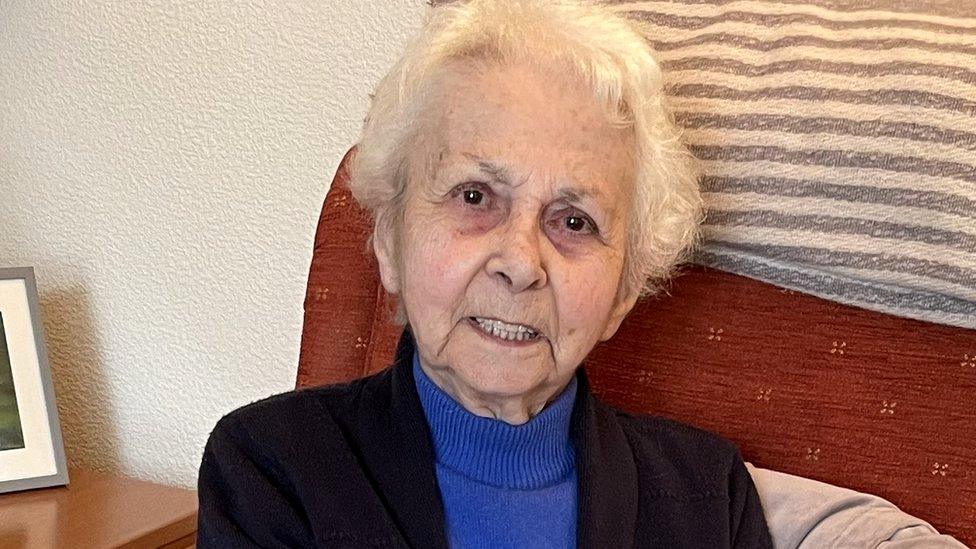NHS at 75: The professor who made artificial hips in his shed
- Published
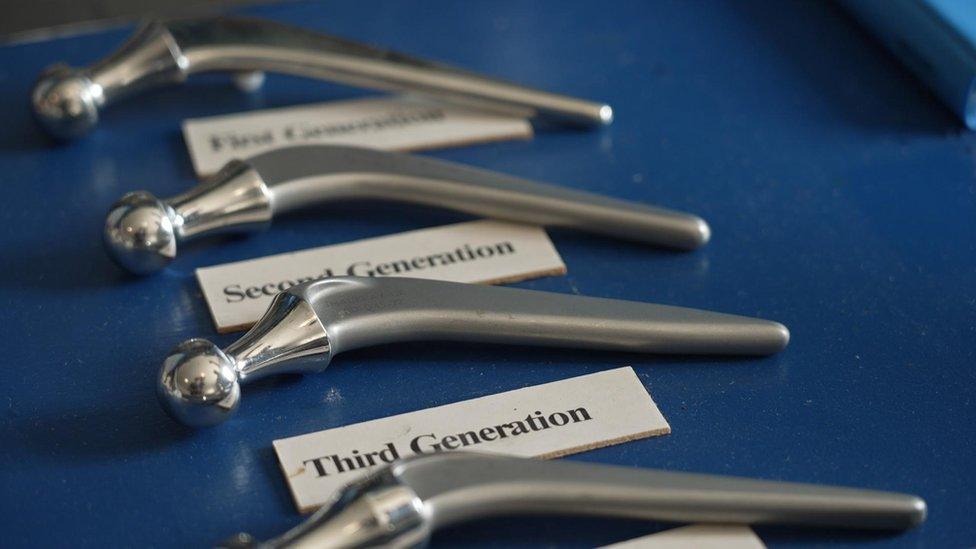
The design of artificial hips has continually evolved over the years
More than 110,000 hip replacement operations are carried out in the UK each year. As the NHS celebrates its 75th anniversary this week, BBC News looks back at how a Lancashire pioneer's work ultimately transformed the lives of millions.
For the past year Sandra Haughton from Northwich has lived with debilitating pain.
"It's completely taken over my life," she tells me.
"It's been horrendous. I haven't driven my car for nearly 12 months. To be able to cook or do the washing - because I can't stand for very long - I use a wheelchair."
Ms Haughton hopes her life is about to change. She's in Wrightington Hospital, West Lancashire, preparing for surgery.
"There's three things that I really want to do," she says. "I'd really love to drive my car again, dance, and I want to walk on the beach."
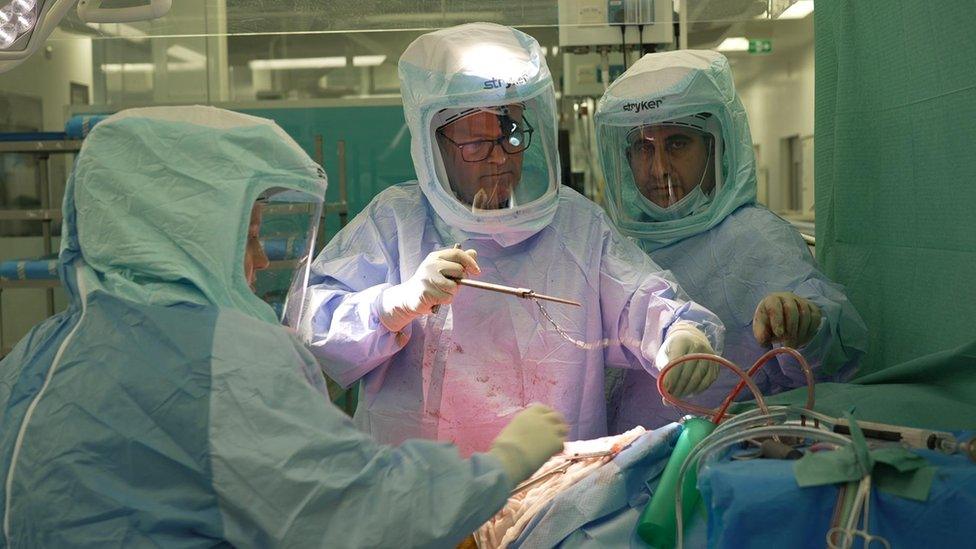
Consultant orthopaedic surgeon Henry Wynn Jones and his team operate on Sandra Haughton
Hip replacement operations are one of the most common forms of surgery on the NHS and they tend to be very successful too, with more than 85% of them still going strong after 20 years.
A lot of that is down to one man, John Charnley, who pioneered hip replacement surgery at Wrightington Hospital in the 1950s and 60s.
Born in Bury in 1911, he began his medical career at Manchester Royal Infirmary and specialised in orthopaedics during and after the war.
Prof Charnley, who would eventually be knighted for his work, arrived at Wrightington in 1958 with the express intention of setting up a hip replacement research centre.
For years Wrightington had been a tuberculosis treatment centre, but the dramatic fall in cases in the 1950s meant it was largely underused.
While artificial hips did exist at the time, they had considerable limitations.
Friction between materials meant that they wore out, or even squeaked.
With his keen interest in engineering, he tested different materials and varying ball-and-socket sizes.
"I think what really drove him was a real interest in solving problems," says Prof Peter Kay, a consultant orthopaedic surgeon at Wrightington Hospital.
"Charnley went through looking at lots of different materials which might work in hip replacement... he actually tried out some of the materials on himself, [putting] bits of the material under his own skin to make sure there weren't reactions to it."
Prof Charnley's hands-on approach even extended to making many of the implants in his garden shed.
"Tuesday night was 'socket night', when he made the sockets for the hip replacements," says Prof Kay.
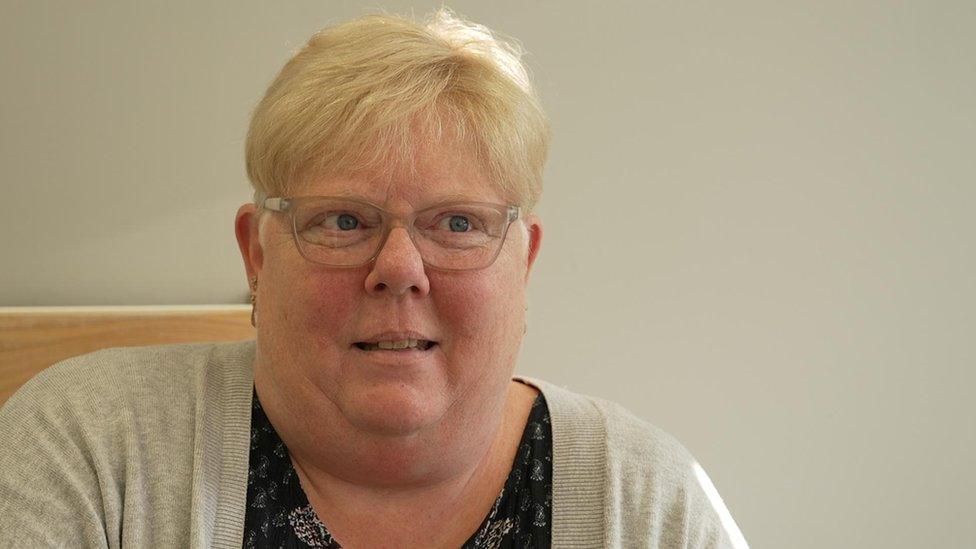
Sandra Haughton hopes her new hip will totally transform her life
In late 1962 Prof Charnley carried out the first successful total hip replacement, a huge achievement, before then turning his attention to infection control in major surgery.
Teaming up with a local engineer, he created a sterile air flow system that is still in use around the world.
'Waiting lists'
Henry Wynn Jones, a consultant orthopaedic surgeon and clinical director for lower limb surgery at the hospital trust, explains the huge difference hip replacements often have for patients.
"The great thing about a hip replacement is that having severe arthritis is extremely debilitating, very painful, patients often require very strong analgesics (painkillers) and their life is on hold while they're waiting. And we have this operation which in the vast majority of cases is pretty much curative," he says.
Like all hospitals, a combination of the Covid pandemic and recent strike action has seen a huge rise in waiting lists for elective procedures at the trust, which has responded by running extra surgeries to try to catch up.
"What we really need to do is try to protect elective centres like ours so we can work 52 weeks a year and not have to stand down in the winter when there are severe bed pressures on the NHS," says Mr Wynn Jones.
He acknowledges: "It's really challenging.
"There probably needs to be a model where there's some capacity to expand capacity for emergency services but without impacting on elective services."
'Transforming lives'
Continuing Sir John's legacy, the trust is now using AI and robotic surgery to further improve results. Lessons learned here are taken around the world by hip surgeons, who visit from far and wide.
"You mention the word Charnley, people across the world know that name, whether it's South America, Australia, Asia," says Prof Kay. "In fact, Charnley's probably better known in other parts of the world than he maybe is locally known in Lancashire."
Globally more than a million hip replacements are now carried out every year.
Wrightington Hospital remains a centre of excellence, carrying out about 1,500 hip replacements annually.
Ms Haughton is one of them, and for that she is very grateful.
"I'm really going to start living again," she says.

Why not follow BBC North West on Facebook, external, Twitter, external and Instagram, external? You can also send story ideas to northwest.newsonline@bbc.co.uk
- Published11 May 2023
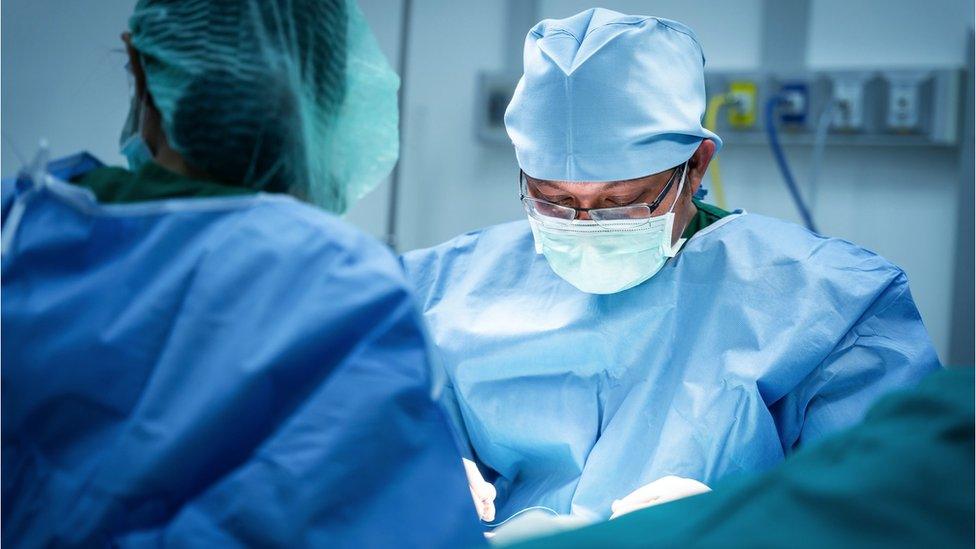
- Published6 March 2023
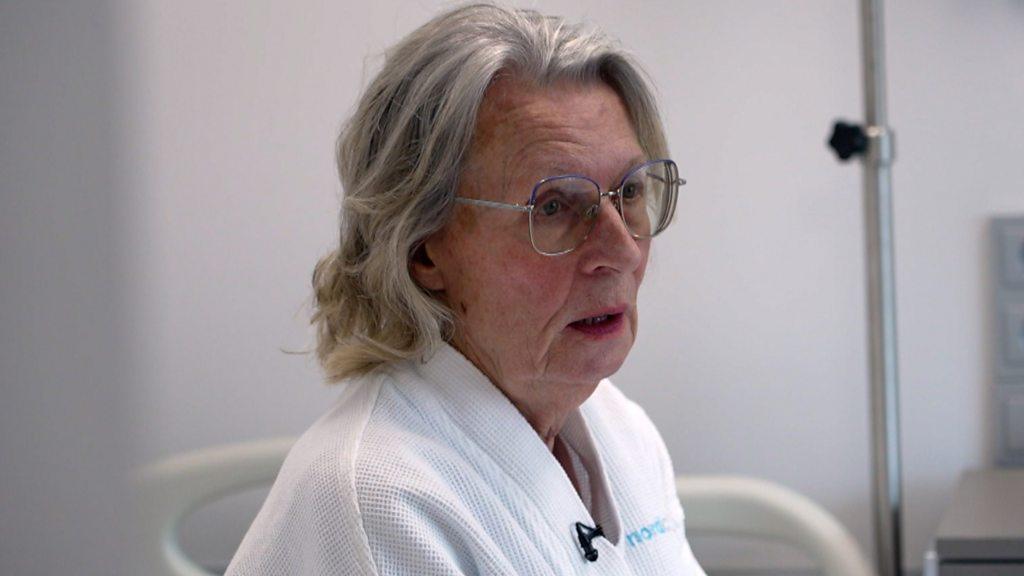
- Published13 February 2023
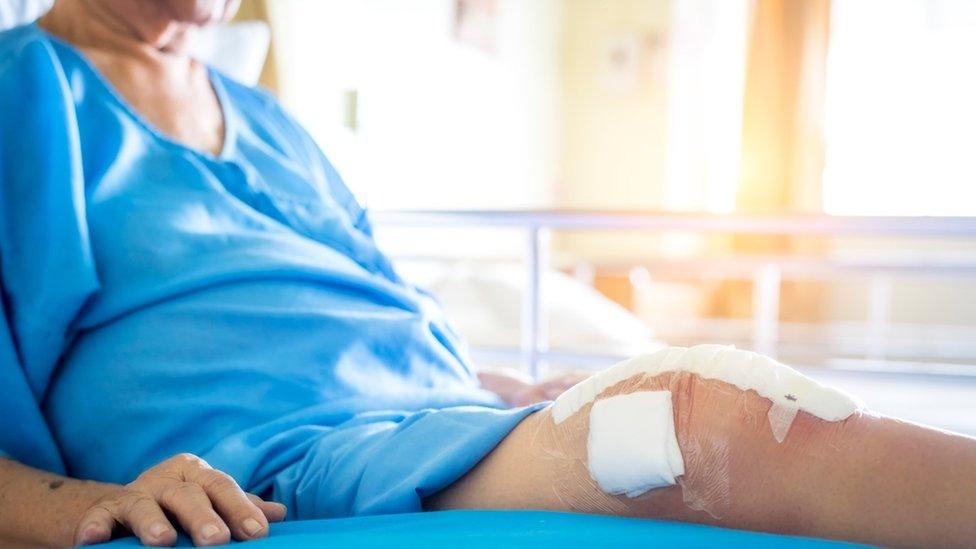
- Published9 March 2022
